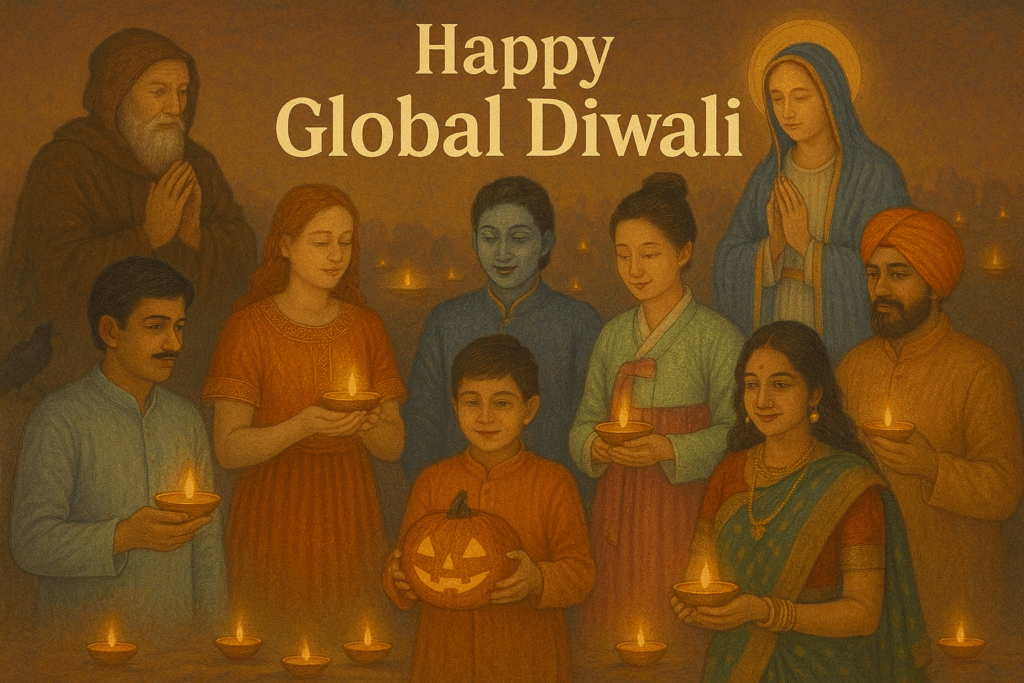
🎉💥🌟 Diwali – A Global Festival 🧨💥🎇
When Light Shines, Many Faiths Unite
The world often seems full of contradictions and conflicts — with its many religions, cultures, ideologies, and perspectives. At times, it may feel impossible to bridge the divides among so many diverse peoples. Yet, if we look closer, we might be surprised to discover how deeply connected we have always been. Diwali, the festival of lights, is a shining example of this shared human spirit.
Let’s take a brief look at how Diwali and Mahalaya Pithru Paksha of the Hindus, Samhain of Ireland and Scotland, Parentalia of ancient Rome, the Day of the Dead in the Philippines and Mexico, All Saints’ Day of Christians, Mahaveera Nirvana in Jainism, Tihar of Nepalese Buddhists, Lhabab Duchen of Tibetan Buddhists, Bandi Chhor Divas of Sikhs, and Chuseok of Korea — culminating in the modern celebration of Halloween — are all beautifully connected through faith, remembrance, and the celebration of light and life.
Mahalaya Pithru Paksha of Hindus
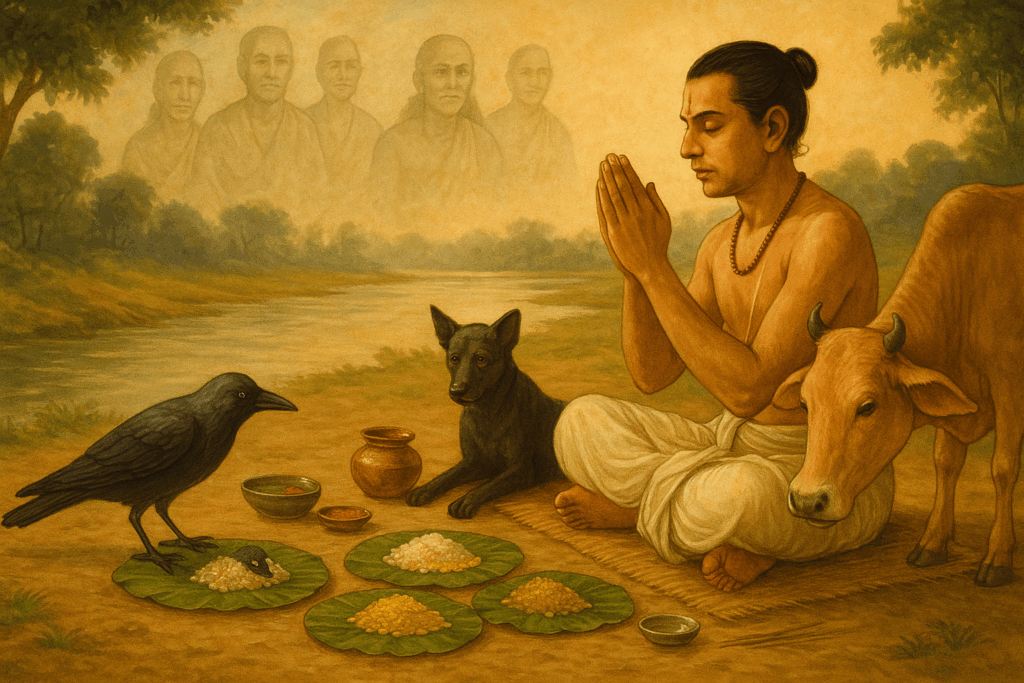
During this time of the year, Hindus observe a two-week period known as Mahalaya Pithru Paksha. It is believed that the souls of ancestors visit the earth to receive offerings and prayers from their descendants. People prepare and offer food, believing that their ancestors may come in the forms of crows, dogs, or cows to partake in these offerings.
Samhain of Ireland and Scotland
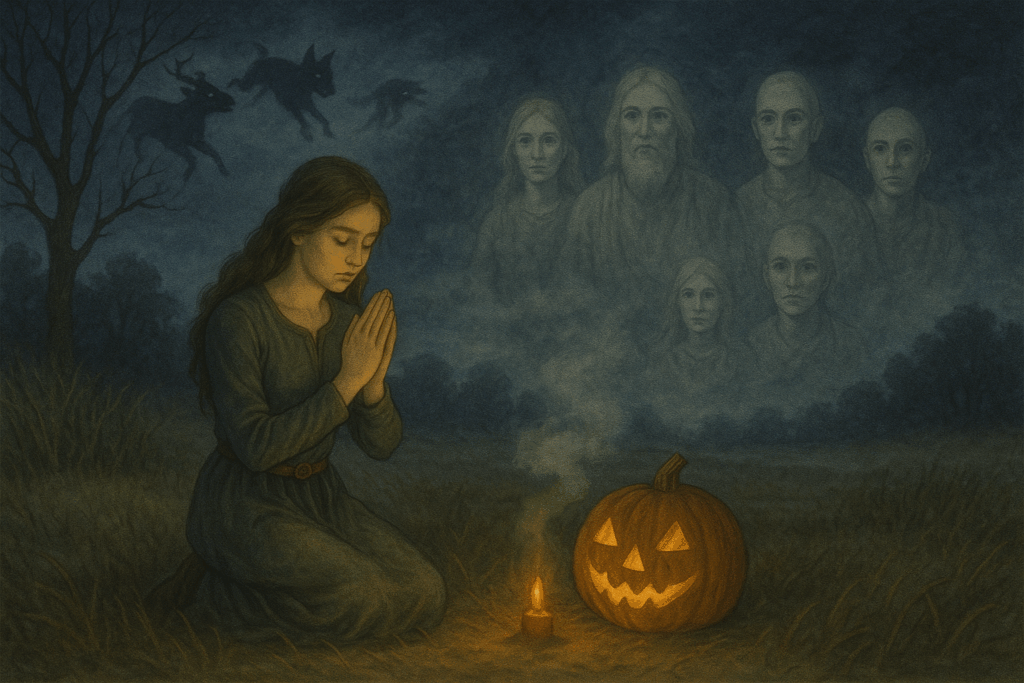
Samhain is observed by the Irish and Scottish around the same time of year. It is believed that during this period, the “doorways” to the Other World open, allowing supernatural beings and the souls of the departed to cross into our world. People offer prayers and rituals to honour and connect with their ancestral spirits.
Parentalia of Rome and All Saints Day of Christians
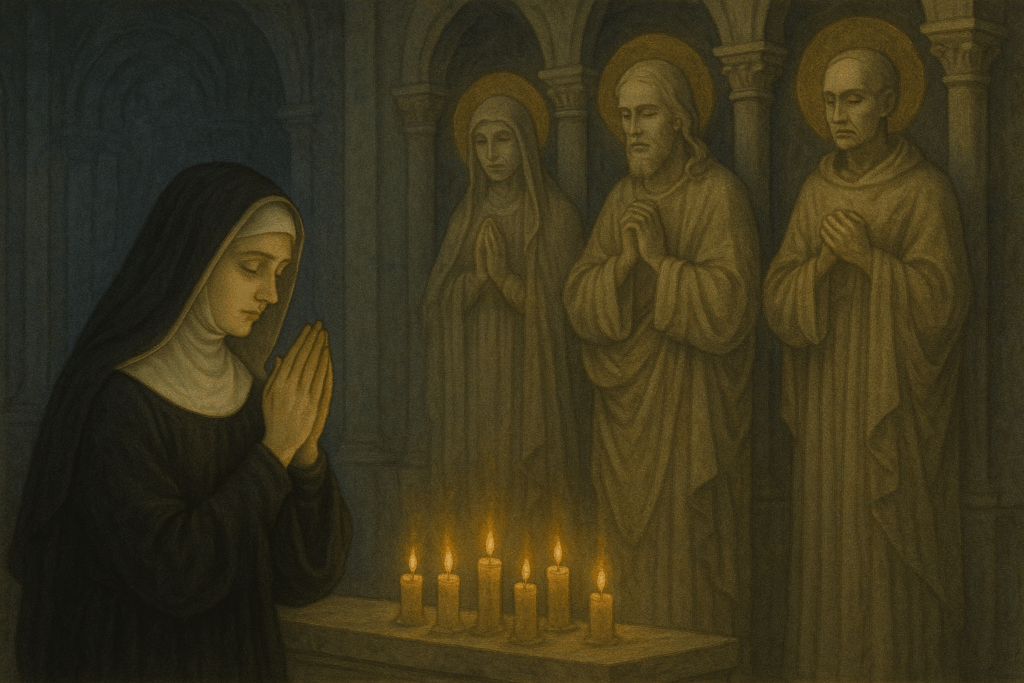
Samhain found its way to Rome, where it evolved into Parentalia, a festival honoring ancestors. Later, as Christianity spread, the tradition of remembering and praying for departed souls transformed into All Saints’ Day, a time to honor the saints and the faithful departed.
Halloween
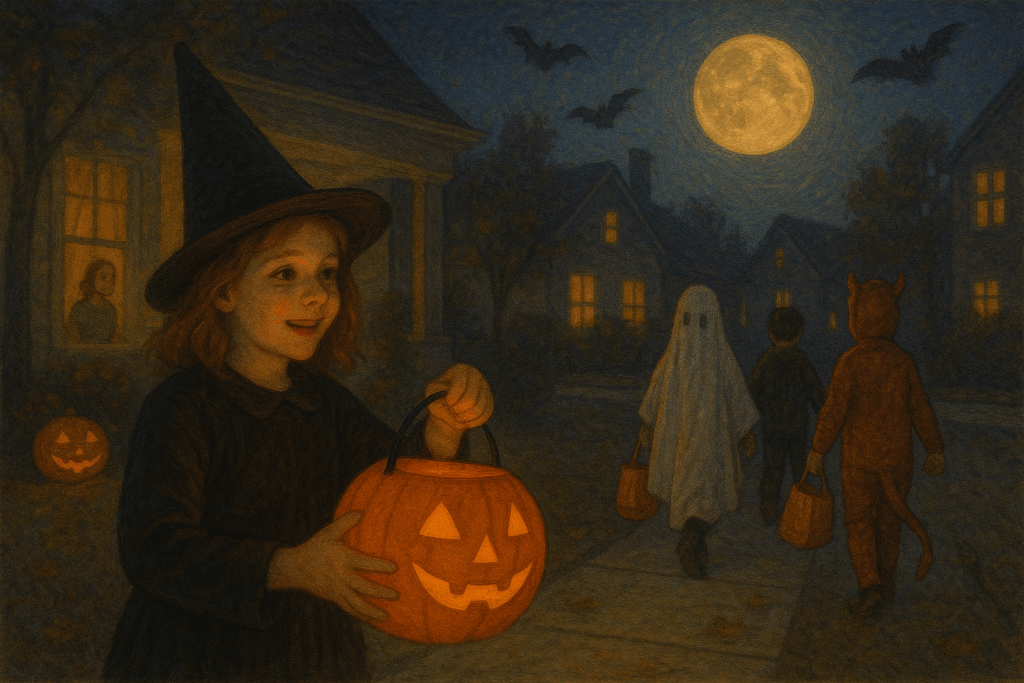
Around 1845, when famine struck Ireland, many Irish people migrated to America, carrying their traditions and festivals with them. In the new land, the ancient festival of Samhain gradually evolved into Halloween. Over time, through American influence, Halloween spread across the world, becoming a global celebration.
Chuseok of Korea
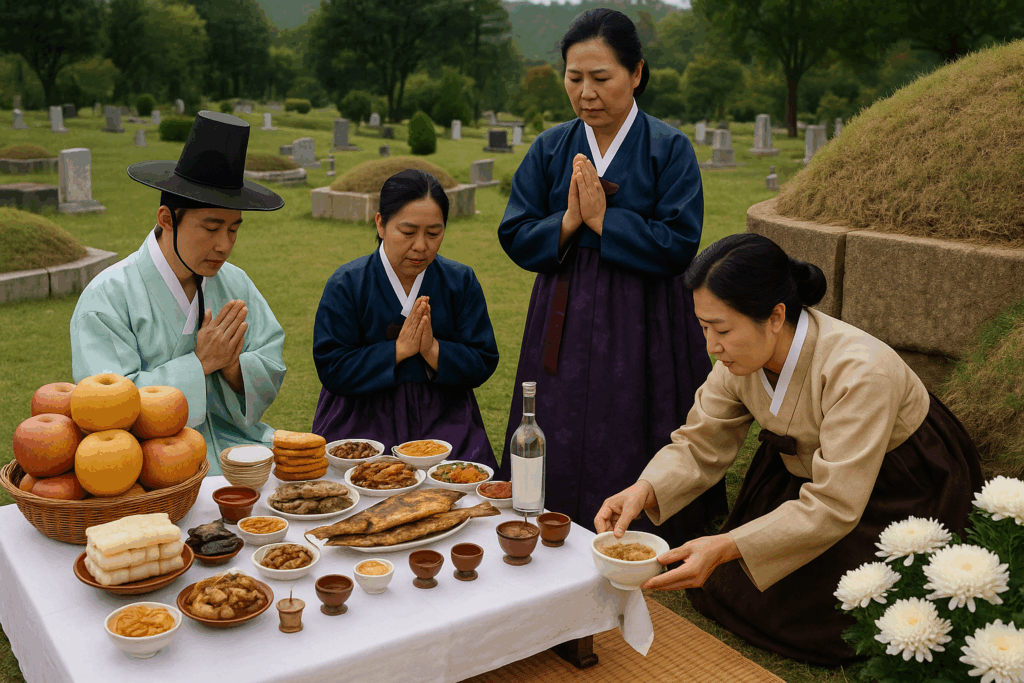
In Korea, this period is observed as Chuseok, a festival dedicated to honoring ancestors. Families perform ancestral rites, visit ancestral tombs to clean and maintain them, and offer food, drinks, and freshly harvested crops as a gesture of gratitude and remembrance.
Bandi Chhor Divas of Sikhs
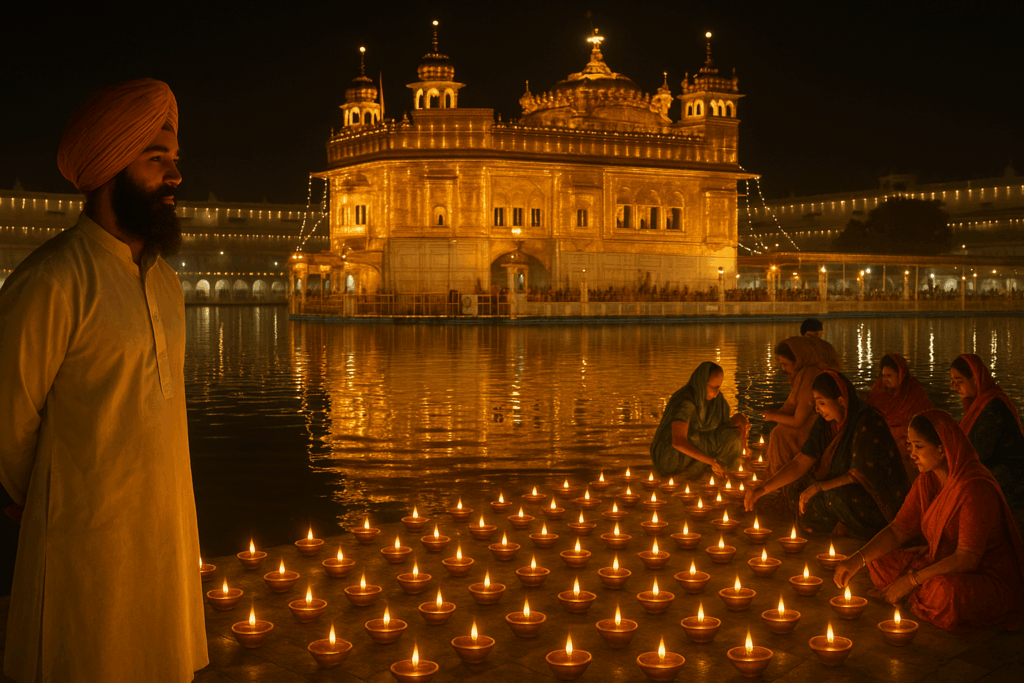
Around this time, Guru Hargobind Sahib, the sixth Sikh Guru, was released from Gwalior Fort along with 52 Hindu kings by Emperor Jahangir. Sikhs commemorate this event as Bandi Chhor Divas — the Day of Liberation — by beautifully illuminating the Golden Temple with lamps, celebrating their Guru’s return, which coincides with Diwali.
Kevala Jnana and Nirvana of Mahaveera Jain
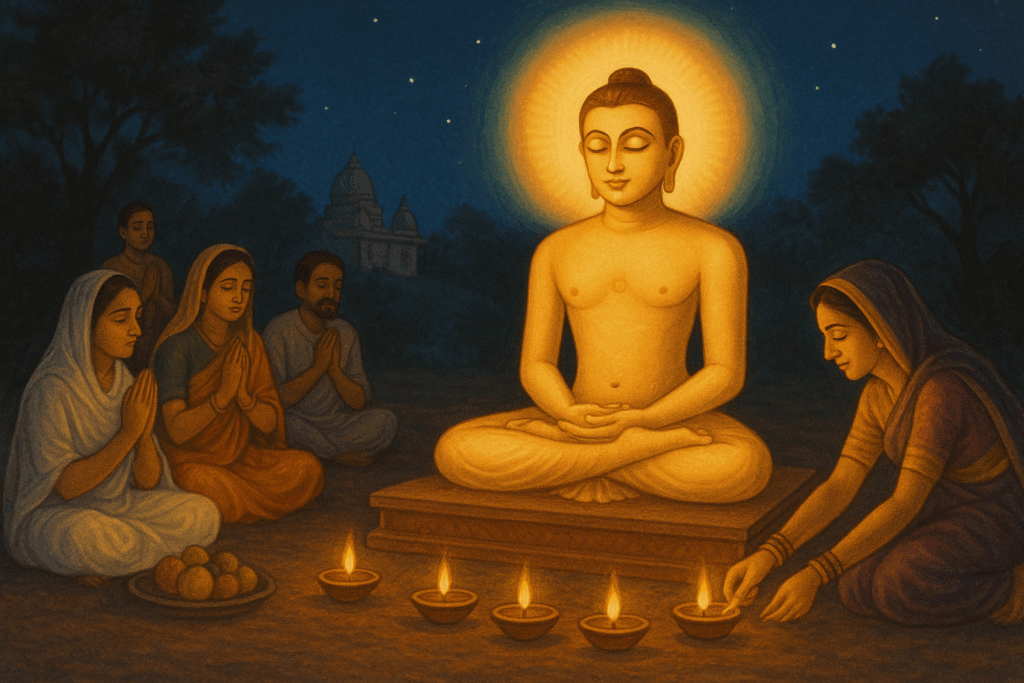
Mahaveera, the 24th and last Tirthankara of the Jains, attained Kevala Jnana (omniscience) and Nirvana (liberation from the cycle of rebirth) on this day at the age of 72 in Pavapuri, Bihar, India. On this occasion, Jains purify their minds, reflect on Mahavira’s teachings, light lamps symbolizing enlightenment, observe fasting and silence, and engage in acts of charity. The day following Deepavali marks the beginning of the new Jain calendar year.
Tihar of Nepal
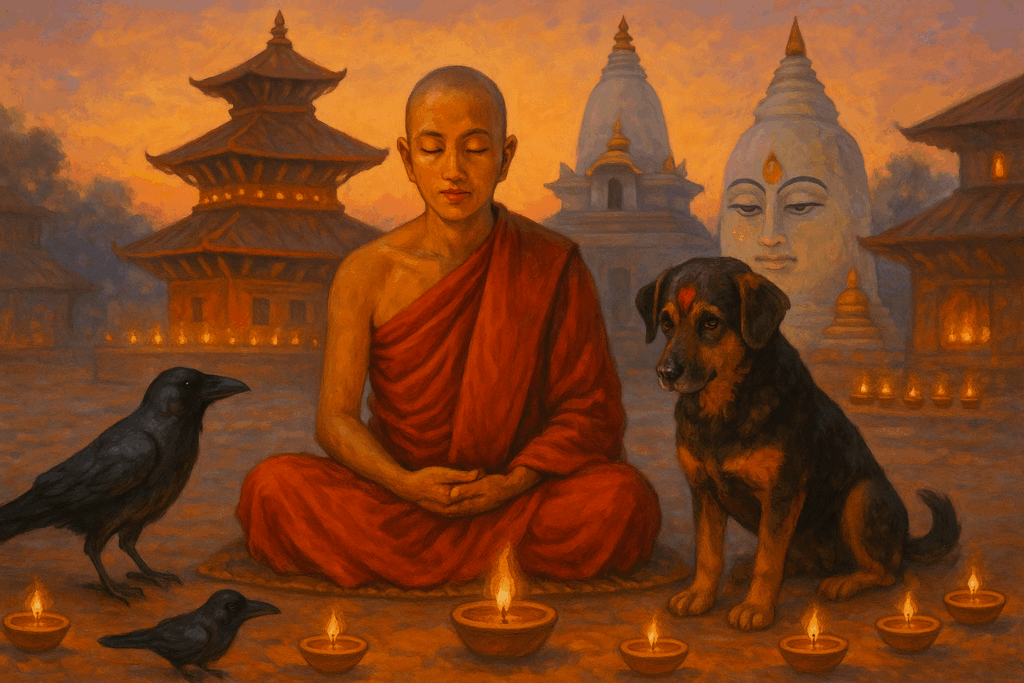
In Nepal, the Newar Buddhists celebrate the five-day Tihar festival, lighting lamps and reflecting on the Buddha’s teachings of non-violence and compassion for all living beings. On the first day, they honor crows (Kag Puja); on the second, dogs (Kukur Tihar); and on the following days, they pay reverence to cows and bulls, expressing gratitude to all creatures that share their lives.
Lhabab Duchen Tibet
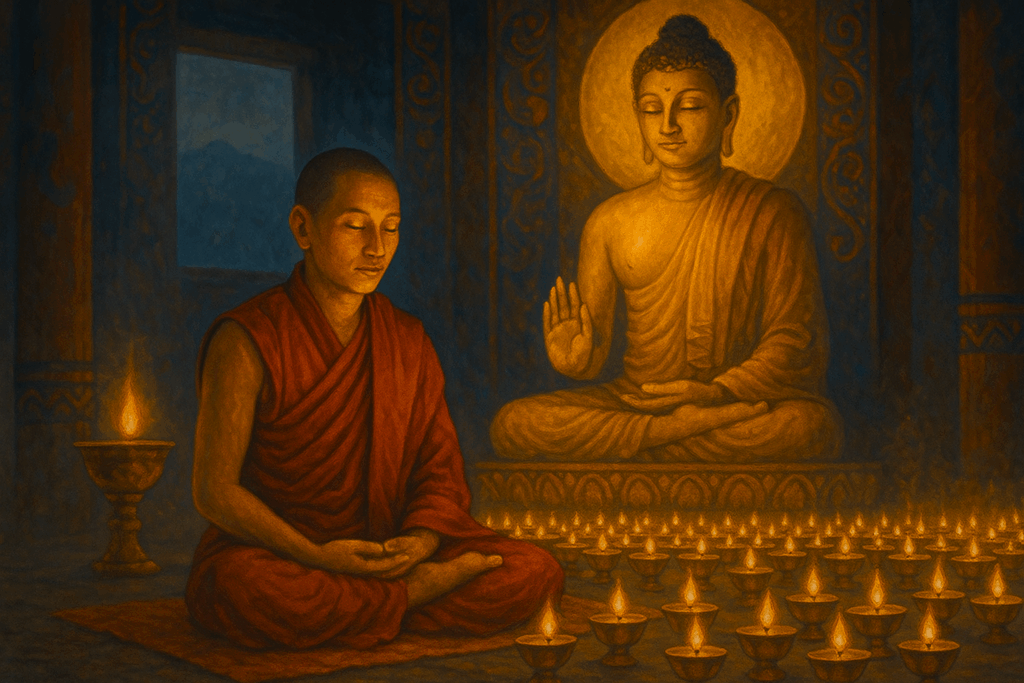
Tibetan Buddhists observe Lhabab Duchen by lighting lamps, engaging in meditation, and reflecting on the Buddha’s teachings of non-violence, compassion, and enlightenment.
The Return of King Mahabali
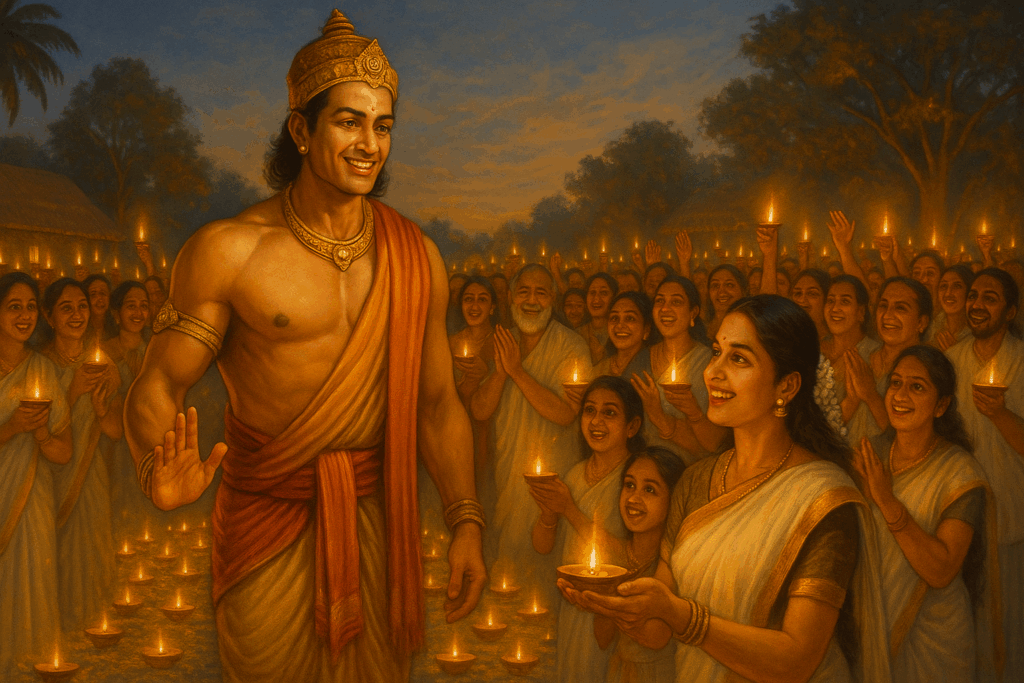
King Mahabali once ruled a vast, righteous, and prosperous kingdom in southern India. He was deeply respected and loved by his people. However, he was eventually defeated by Vamana, an incarnation of Lord Vishnu, and sent to the netherworld (Paathala). Moved by Mahabali’s virtue and devotion, Vamana granted him permission to visit his people once every year. When Mahabali returns, people light lamps to express their love and reverence for their noble king — a tradition celebrated especially in Kerala, Karnataka, and Maharashtra.
The Return of the Pandavas
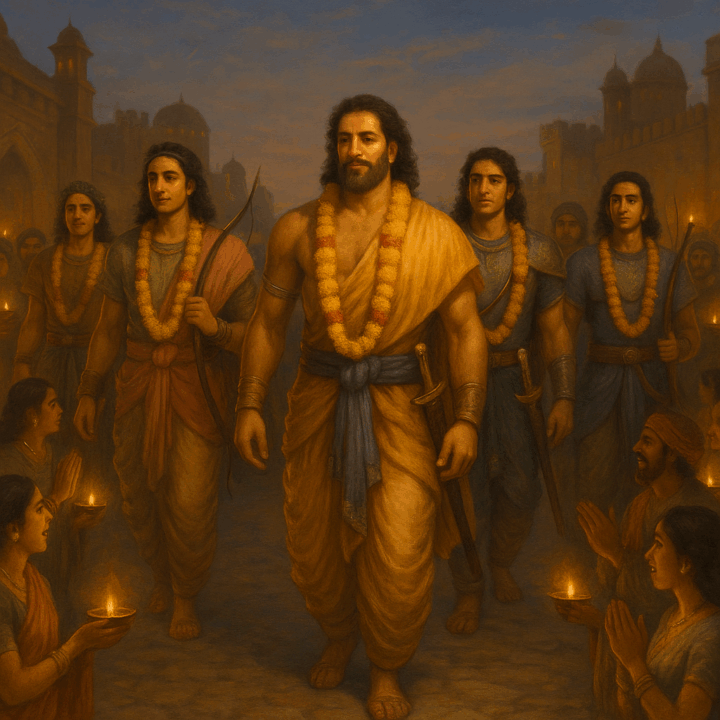
After completing their twelve years of exile and one year in disguise, the Pandavas emerged victorious in the Uttara Gograhana War and returned to Hastinapura. To celebrate their homecoming, the people lit lamps and rejoiced in their triumph.
Lakshmi Puja
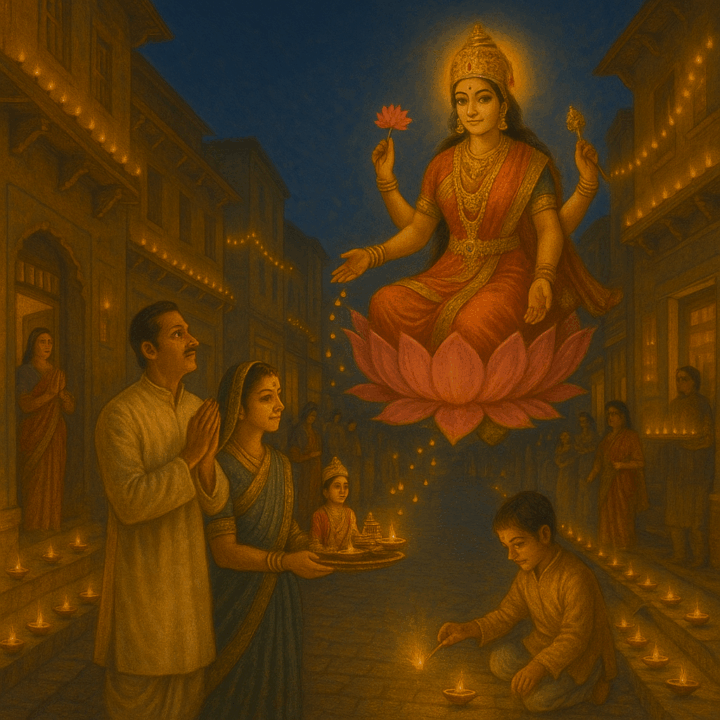
It is believed that on Diwali night, Goddess Lakshmi roams the earth, bestowing wealth, prosperity, and happiness upon her devotees. To welcome her, people clean their homes, light lamps, and adorn streets and doorways with decorations. In Northern India, especially among the business community, Lakshmi Puja is performed on the third day of Diwali to invoke her blessings for the year ahead.
Return of Lord Rama to Ayodhya After Victory
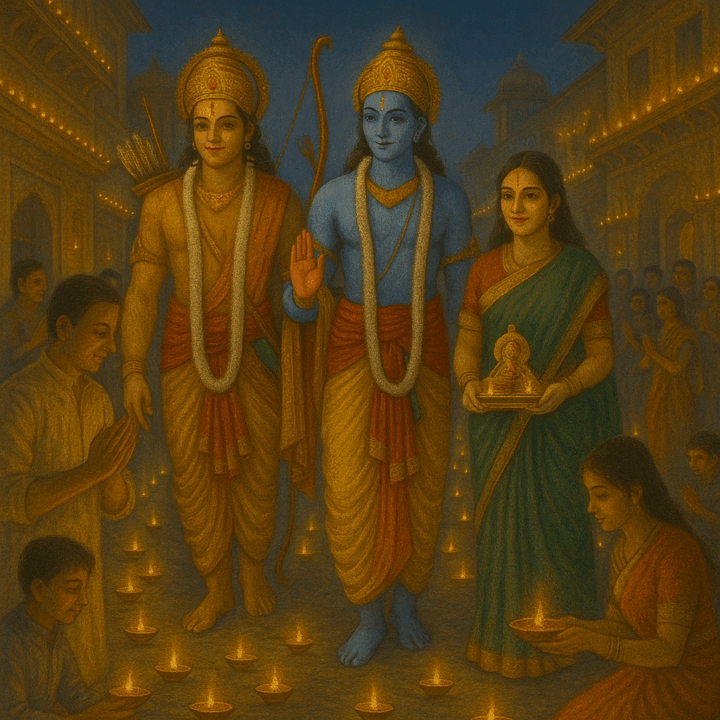
The people of Ayodhya joyfully welcomed Lord Rama, Sita, and Lakshmana by lighting rows of oil lamps and celebrating their return after fourteen years of exile.
Lord Krishna liberates thousands of women
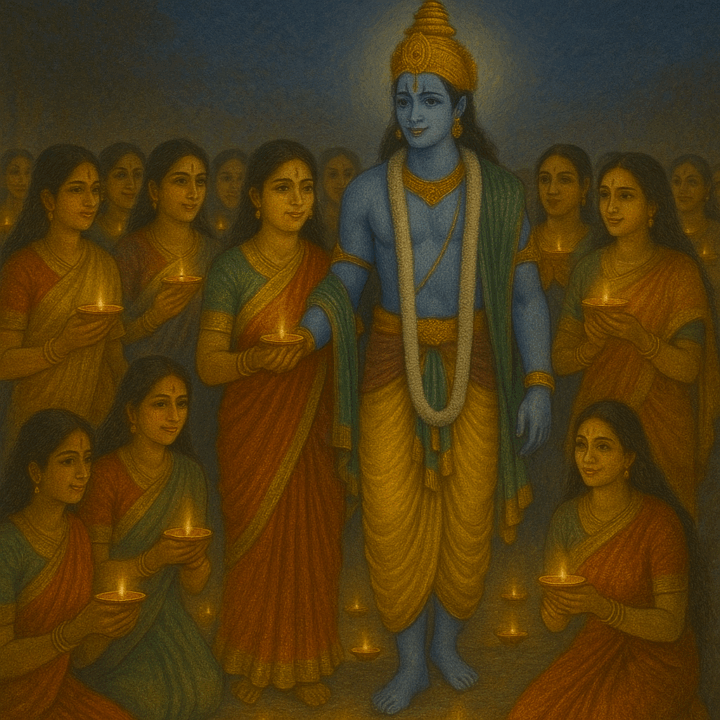
Narakasura had imprisoned thousands of women after cruelly slaying their loved ones. When Lord Krishna defeated him and freed the captives, the women celebrated their liberation by lighting lamps and worshipping Krishna in gratitude for restoring their dignity and honour.
Be it Samhain, Parentalia, All Saints’ Day, Halloween, Chuseok, Tihar, Lhabab Duchen, Bandi Chhor Divas, or Diwali — it is remarkable how people across the world celebrate similar beliefs and traditions during this time of the year. It beautifully reminds us that, despite our differences, we are all connected — making Diwali, and its many counterparts, truly a global festival of light and unity.
💥🌟 Happy Global Diwali 🧨💥🎇
On behalf of the Global Indian Organization
Veera Sivaratri
Communications and Media Chair
